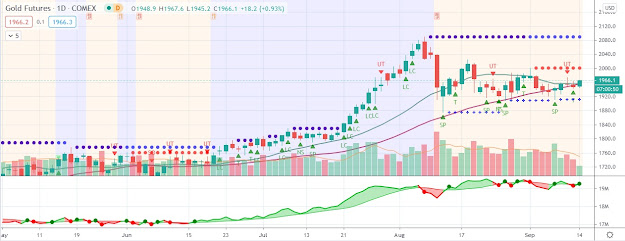QE3 will be at a pace of $40 billion per month until such time as the U.S. labor market “improves substantially.”
The Federal Reserve delivered a particularly dovish statement at its
FOMC meeting on Thursday, as it announced an open-ended third round of
quantitative easing (QE3) and extended the timeframe for its near-zero
interest rate policy through at least mid-2015.
The size and structure of QE3 will be at a pace of $40 billion per month until such time as the U.S. labor market “improves substantially.” Additionally, instead of purchasing U.S. Treasuries, this time Ben Bernanke and his fellow central bankers bill buy mortgage-backed securities.
“The Committee is concerned that, without further policy accommodation, economic growth might not be strong enough to generate sustained improvement in labor market conditions,” the Fed noted. “Furthermore, strains in global financial markets continue to pose significant downside risks to the economic outlook.”
The Federal Reserve went on to say that “If the outlook for the labor market does not improve substantially, the Committee will continue its purchases of agency mortgage-backed securities, undertake additional asset purchases, and employ its other policy tools as appropriate until such improvement is achieved in a context of price stability.”
The initial reaction in the markets to the Fed’s decision included the following:
- Gold futures jumped $40.80, or 2.4%, to $1,774.50 per ounce – its highest level since February 28th of this year
- The U.S. Dollar Index fell only modestly, by 0.2% to 79.557
- The S&P 500 Index climbed 1.1% to 1,452.41 – its highest level since December 2007
- U.S. government bonds sold-off sharply, with the yield on the U.S. ten-year treasury note rising 200 basis points to 1.78%
The size and structure of QE3 will be at a pace of $40 billion per month until such time as the U.S. labor market “improves substantially.” Additionally, instead of purchasing U.S. Treasuries, this time Ben Bernanke and his fellow central bankers bill buy mortgage-backed securities.
“The Committee is concerned that, without further policy accommodation, economic growth might not be strong enough to generate sustained improvement in labor market conditions,” the Fed noted. “Furthermore, strains in global financial markets continue to pose significant downside risks to the economic outlook.”
The Federal Reserve went on to say that “If the outlook for the labor market does not improve substantially, the Committee will continue its purchases of agency mortgage-backed securities, undertake additional asset purchases, and employ its other policy tools as appropriate until such improvement is achieved in a context of price stability.”
The initial reaction in the markets to the Fed’s decision included the following:
- Gold futures jumped $40.80, or 2.4%, to $1,774.50 per ounce – its highest level since February 28th of this year
- The U.S. Dollar Index fell only modestly, by 0.2% to 79.557
- The S&P 500 Index climbed 1.1% to 1,452.41 – its highest level since December 2007
- U.S. government bonds sold-off sharply, with the yield on the U.S. ten-year treasury note rising 200 basis points to 1.78%




Comments
Post a Comment